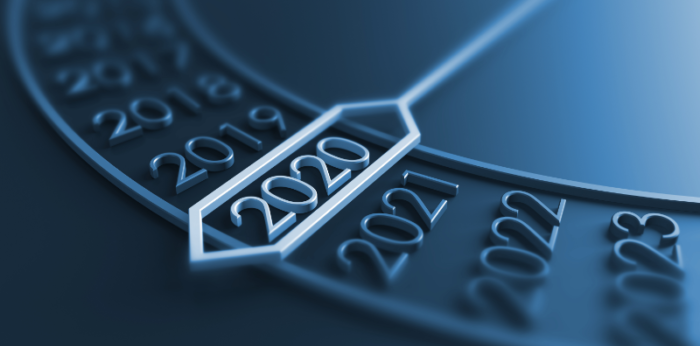With less than twelve months remaining for the new regulation to take place, ship owners can’t waste time anymore; within 2019, they need to decide on the most appropriate approach for their operations in order to comply with the Sulphur cap and remain commercially sustainable in the long run. So far, there is no silver bullet solution while each option introduces additional challenges to operators.
Recent IMO developments
MEPC 73 banned the carriage of non-compliant fuel oil for combustion purposes for propulsion or operation onboard and approved guidance for developing a non-mandatory plan for ships to implement the sulphur limit. During MSC 100 agenda, IMO agreed to address fuel safety concerns, concluding that it should adopt a more robust stance against fuel safety issues.
No silver bullet solution
Ship operators may choose one of the following options: low Sulphur distillate fuels, low Sulphur heavy fuel oil, Exhaust Gas Cleaning Systems (EGCS) or scrubbers, Liquefied Natural Gas (LNG) or alternate fuels such as LPG, ethane, methanol, compressed natural gas (CNG), bio-fuel, solar power and fuel cells. Although currently, several of the aforementioned alternatives are not widely used in the maritime industry, it is expected that these emerging technologies may become more common in the long run.
Sulphur cap is not plain sailing
According to a recent survey by Drewry, 33% of respondents expressed poor awareness and understanding of the new regulation, while 52% feel either ‘not prepared’ or ‘not at all prepared’ for the impact of the new emissions regulations.
[smlsubform prepend=”GET THE SAFETY4SEA IN YOUR INBOX!” showname=false emailtxt=”” emailholder=”Enter your email address” showsubmit=true submittxt=”Submit” jsthanks=false thankyou=”Thank you for subscribing to our mailing list”]
Fuel costs remain a grey area for the operators at the time of compliance and in this regard, there are several sources providing projections for the cost of marine fuels. It is estimated that even if the cost of oil remains at the lower levels, the change to low sulphur fuel in 2020 could lead bunker costs to return to their 2014 peak. In fact, if in 2020, oil prices remain at about USD 80 per barrel, the differential between low sulphur and the current cost of fuels could increase by as much as USD 400 per tonne. This is something that the US is worried about as well. For this reason, it supported a phasing implementation, which would build experience, but it was declined.
Another aspect that drives uncertainty about fuels is the recent contamination problems. In April 2018, multiple vessels reported problems with contaminated fuels in Houston, Texas. A similar problem was also reported in Singapore and Panama. These issues made INTERTANKO state that fuel contamination may become a ‘global epidemic’, while IBIA claimed that no meaningful resolution has been reached. Nevertheless, it also added that these cases are unrelated to low sulphur fuel oil blending.
The risks of ‘dirty fuels’
From 2020 and onwards, we are going to see a new range of compliant fuels along with the current low sulphur distillate fuels. However these fuels are currently under development and do not have standardization, as the current ISO 8217:2017 standard does not cover them and therefore concerns are raising about their quality. For example, although the newer blended fuels will be compliant with the 0.50% m/m sulphur limit, they may differ in their composition from supplier to supplier and port to port. This could potentially lead to compatibility and mechanical problems.
Contaminated fuel, the so-called dirty fuel, contains additive at the concentration used in the fuel, or any added substance or chemical waste that can cause harm to ship engines in several ways like clogging pipelines and/or overwhelming fuel filters and subsequently jeopardize the safety of the ship and/or affect the performance of the machinery.
5 ways to avoid contaminated fuels
- Ensure good bunker management
- Always check historical records of bunker supplier
- Send samples for laboratory analysis
- Conduct regular monitoring of the engine function
- Avoid mixing fuels in storage tanks.
Several ports are banning open-loop scrubbers
Recently, many ports have banned the water discharge from open-loop scrubbers. Belgium only allows scrubbers discharge in coastal and open seawaters at least 3nm off coast, while in Germany, EGCS discharge is not allowed in inland waterways, canals and ports within inland waterways. As for the US, EGCS discharge is not allowed in California and Connecticut, but it is allowed under conditions in Hawaii. Regarding China, regulators have updated part of its domestic emission control area (DECA) regulations, which apply from 1 January 2019. The banned areas remain within inland ECAs, port waters under coastal DECA and the Bohai Bay waters. Nevertheless, a full ban on open-loop scrubbers could be adopted soon. Port of Fujairah in the United Arab Emirates and the Port of Singapore have also announced a ban of open loop scrubbers.
LNG considerations
Despite LNG being an environmental friendly solution, its viability for ships to use depends on the availability of a network of LNG bunkering infrastructure; something that, at this stage, has not seen much development. Moreover, LNG requires increased storage space, in addition to costly changes to current port infrastructure. Another obstacle is the fact that retrofitting a vessel to be able to run on LNG, is a complex operation. This requires engine modification, new gas tanks, and increase the cost to equip LNG tanks and relevant infrastructure. Finally, as with the low-sulphur fuels, there is not a worldwide regulatory standard for LNG fuel propulsion, making this option not so attractive to several shipowners at the moment.

































































